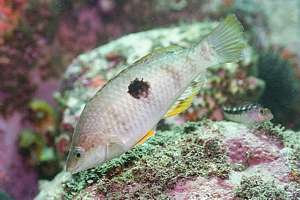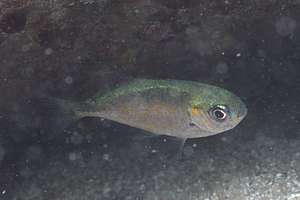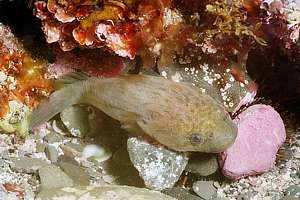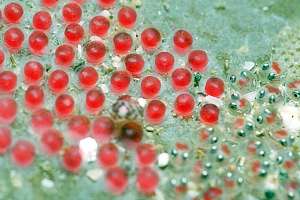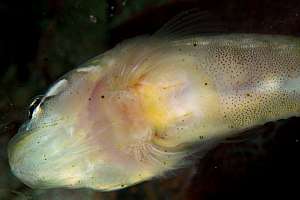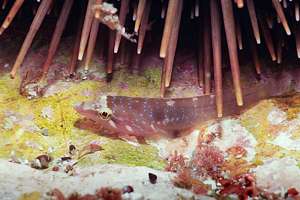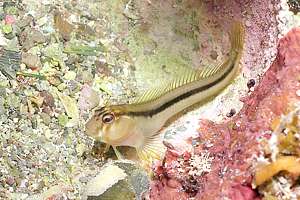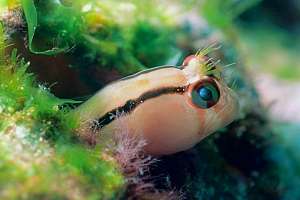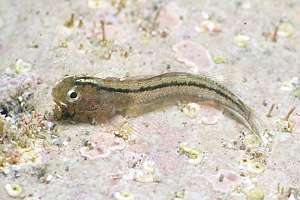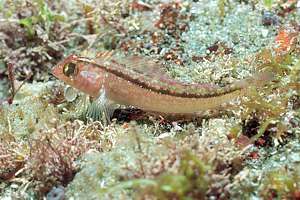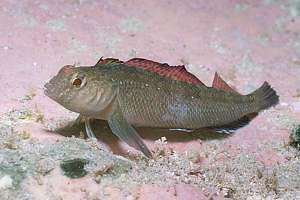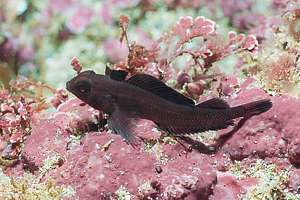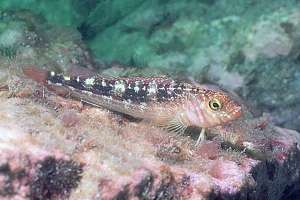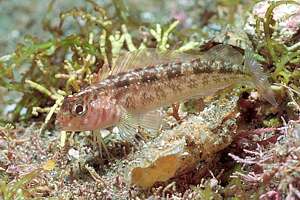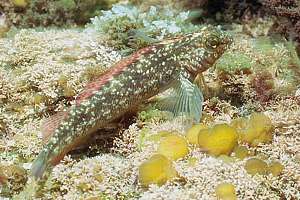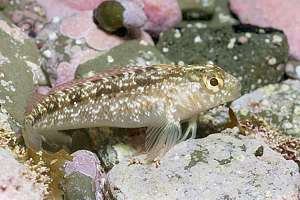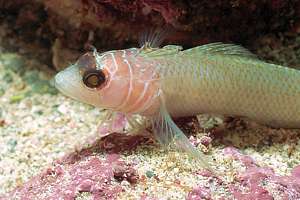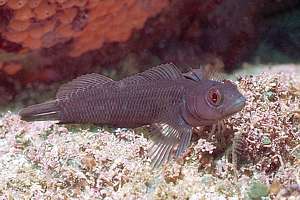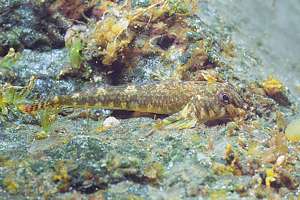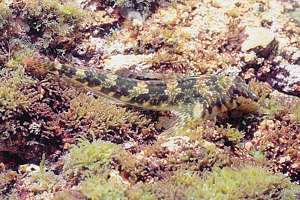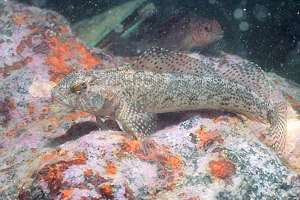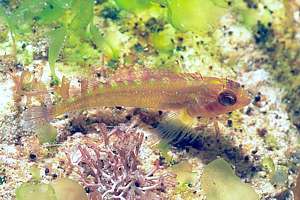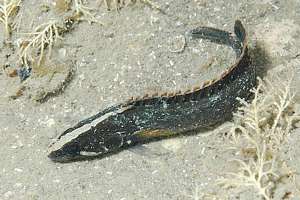 0609149: the olive rockfish (Acanthoclinus fuscus)
is easily identified from its eel-like shape and long back fin with bent-back,
rubbery, finrays. It also often has a white stripe over its snout, but
can also discolour itself to jet black. The rockfish can live for hours
out of the water, which helps it to guard its nest of pink eggs under a
stone, high up the intertidal. The rockfish can grow to 30cm in length.
Several species are known in NZ, but only this one is common on the rocky
shore. It is a predator, feeding on small crabs, shrimps, sea lice and
slaters.
0609149: the olive rockfish (Acanthoclinus fuscus)
is easily identified from its eel-like shape and long back fin with bent-back,
rubbery, finrays. It also often has a white stripe over its snout, but
can also discolour itself to jet black. The rockfish can live for hours
out of the water, which helps it to guard its nest of pink eggs under a
stone, high up the intertidal. The rockfish can grow to 30cm in length.
Several species are known in NZ, but only this one is common on the rocky
shore. It is a predator, feeding on small crabs, shrimps, sea lice and
slaters. |
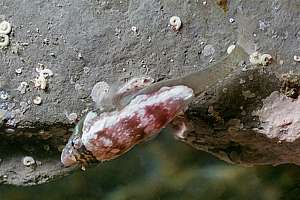 f050430: a 30mm young lumpfish (Trachelochismus pinnulatus)
is because of its neck patch, difficult to see, even though they may be
quite common. Taking this photo took much patience.
f050430: a 30mm young lumpfish (Trachelochismus pinnulatus)
is because of its neck patch, difficult to see, even though they may be
quite common. Taking this photo took much patience. |
